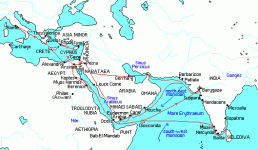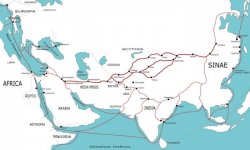This is the National Geographic's take on the paper.
http://news.nationalgeographic.com/...ng-europe-islands-genetics-neolithic-science/
There's also some quotes from the authors:
Ed. Sorry, the quotes didn't post...
"The gene flow was from the Near East to Anatolia, and from Anatolia to the islands," Stamatoyannopoulos said. "How well the genes mirror geography is really striking."
The new data show that people living around the Mediterranean today have common ancestors in Anatolia. But then the genes diverge, with Greek islands like the
Dodecanese archipelago and
Crete forming a sort of genetic bridge to the rest of Greece, Sicily, Italy, and north into Europe. In the southern Mediterranean, the genetic signatures of modern-day Egyptians, Libyans, Tunisians, and Moroccans form a separate genetic branch.
The two distinct paths suggest that there wasn't much genetic mingling once the populations went their separate ways north and south from Anatolia. The sea helped migration in the northern Mediterranean, where people traveled by water from island to island as they spread west. But "there's very little gene flow" between the northern and southern Mediterranean, and "the sea served as a barrier," Stamatoyannopoulos said.
That's a pretty novel use of the term Near Eastern. They're definitely saying it went from the Levant to Anatolia and then to the islands, which I wasn't clear about from looking at all the tables in the supplement. It remains to be seen what ancient DNA will say.
The article also quotes from other scholars who have a slightly different take on the issue.
Those populations may not have been completely separate, however, said archaeologist
Helen Dawson, a research fellow at the Topoi Excellence Cluster in Berlin who has excavated Neolithic sites on Mediterranean islands. There is evidence of contact across the Mediterranean: For example, archaeologists have found blades in Neolithic settlements in
Tunisia made from volcanic glass that comes from isolated islands near Sicily.
"There could have been all sorts of networks across the Mediterranean that haven't left traces" in the genetic record, she said. "Maybe there was no genetic mixing, but there was definitely contact ... It's not like the sea posed an insurmountable barrier."
Also, Pontus Skoglund also chimed in...
Pontus Skoglund, a geneticist at Harvard Medical School, said more data are needed to confirm that these people accurately represent those who lived there 9,000 or more years ago. "This is a great initiative to look at these things more closely," he said. "The question is, what time depth does it have?"
Ideally, researchers would be able to compare
ancient DNA recovered from the bones of Neolithic settlers to that of modern populations. "It's always difficult to make inferences mostly based on contemporary DNA," Skoglund cautioned. "Modern patterns are not necessarily representative of ancient patterns."






